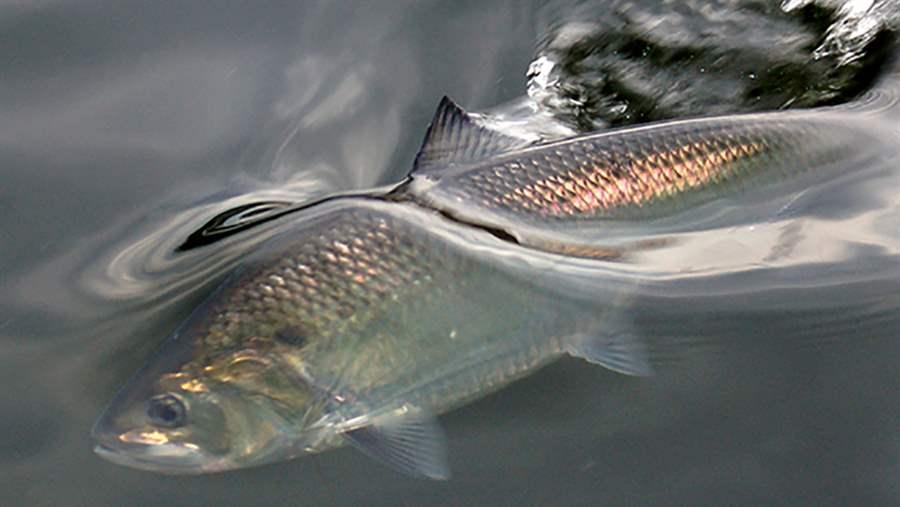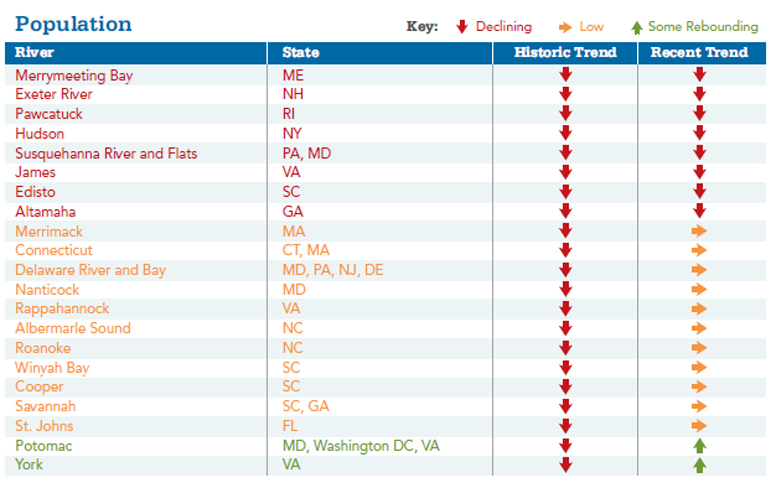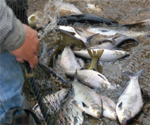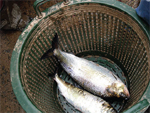American Shad
A Celebrated Species of the Atlantic Coast
American shad populations are in serious decline along the Atlantic Coast. By restoring American shad we can protect rivers and coastal ecosystems where shad provide a crucial source of food to other wildlife including striped bass, bluefish, shorebirds, and marine mammals. At the same time, we can revive a favorite sport fish and a prized delicacy.
That Was Then.
Shad's historic, cultural, and economic significance earned it the nickname the “Founding Fish.” Shad supported one of the most important commercial and recreational fisheries in North America and contributed to the local economy of East Coast river towns. George Washington was a commercial shad fisherman, and during the American Revolutionary War, shad was an important food for the Continental Army.
This Is Now.
East Coast states will be required to ban all commercial and recreational American shad fishing in state waters by January 2013 unless they can prove fishing is being done sustainably. Overfishing, pollution, and habitat loss have been identified as the primary cause for the shad's decline. A modern threat—the unintended at sea catch of shad—remains unaddressed and unregulated.
What's the Catch? Spotlight on the Hudson River.
Although habitat and water quality have improved in the Hudson River, the American shad population continues to decline, exemplifying an East Coast trend. Signs point to ocean catch for a reason. The Hudson River once supported one of the most robust shad populations and fisheries in North America. But today, commercial and recreational fishing for shad is closed in the Hudson River as well as all the marine and coastal waters of New York.
 © Field and Stream
© Field and StreamAn American Shad
Historic Threats
Habitat Loss: In the Hudson River, destruction of habitat occurred from the late 1800s through the mid 1900s from dredging and filling. However, major habitat alteration has not occured over the past 50 years.
Pollution: Poor water quality in rivers has contributed to the historic decline in shad. However, the recent decline in shad populations has occurred despite improved water quality in the Hudson River.
Modern Threat
Accidental Catch in the Ocean: Although targeted commercial fishing for shad in state ocean waters closed in 2005, industrial boats that fish for Atlantic herring, mackerel, and squid continue to incidentally catch shad. Up to 165 feet long, these are the largest fishing vessels on the East Coast, with football field-sized nets. These fishing operations are poorly monitored, and the total recorded incidental catch of American shad in ocean waters averaged more than 115,000 pounds per year since 2005.
Coastwide, American shad stocks have fallen substantially from historic levels. Between 1998 and 2007, only two East Coast rivers showed an increase in population.

Steps Toward Recovery
Restoration of this founding fish will require an integrated approach to reduce mortality on all life stages as quickly as possible by implementing protections for shad in their freshwater and ocean habitats. The Herring Alliance recommends the following steps to protect shad in the ocean:
- Increase monitoring of commercial Atlantic herring, mackerel, and squid fisheries in order to identify, quantify, and characterize American shad catch.
- Federally-mandated limits on total catch and reduce the annual amount caught at sea.
- Include American shad as a non-target stock in the fishery as a species that is in need of conservation and management.
To view additional tables, figures, and learn how to get involved, please download the PDF version of this fact sheet.
Fact Sheet File: American Shad (PDF)













